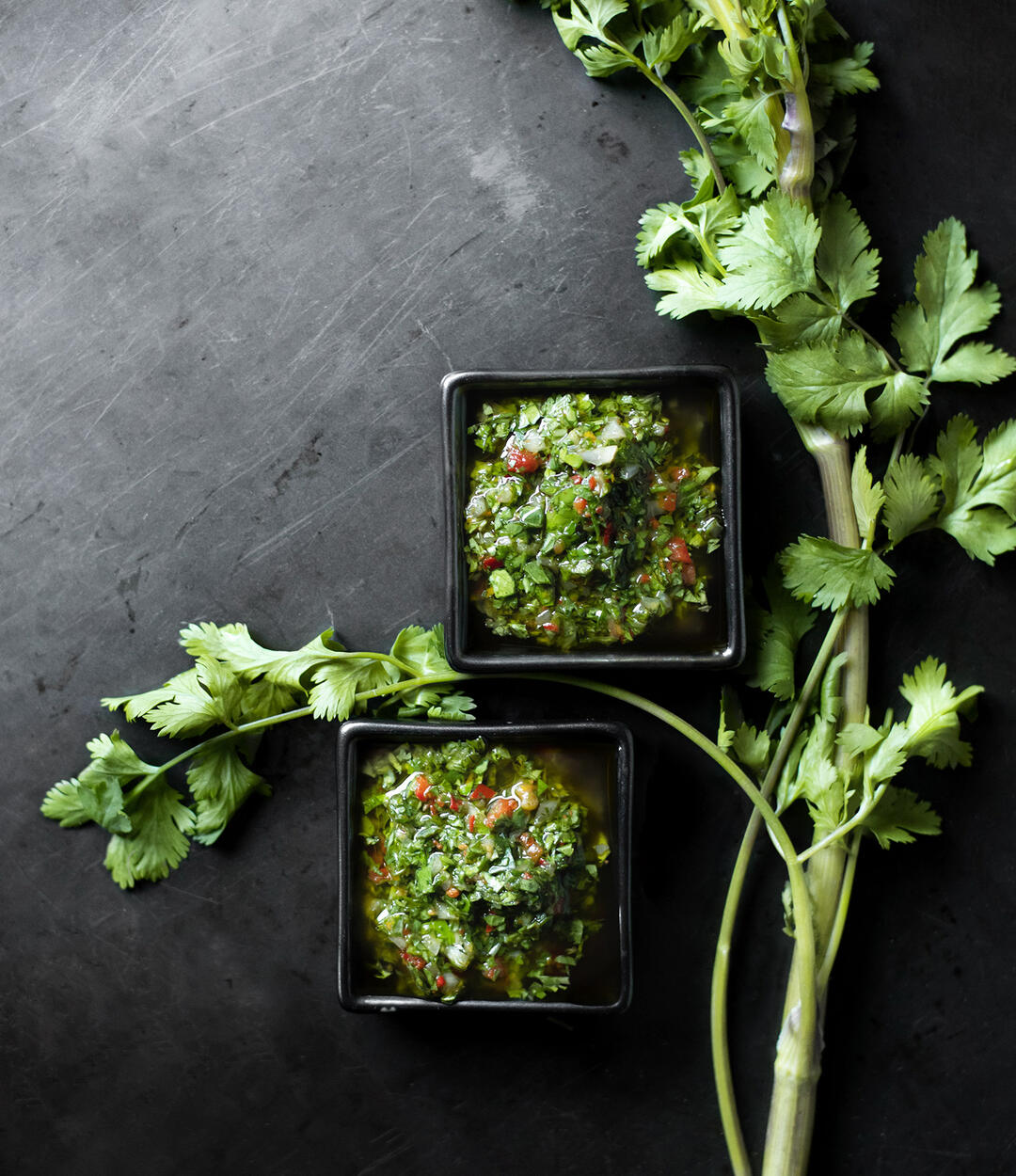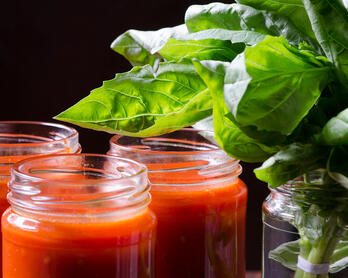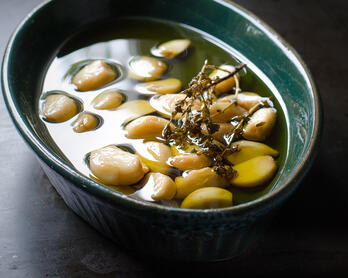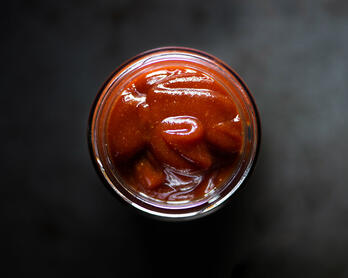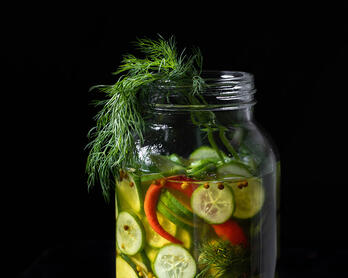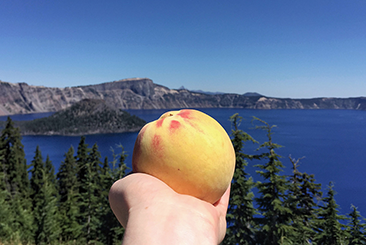Chimichurri
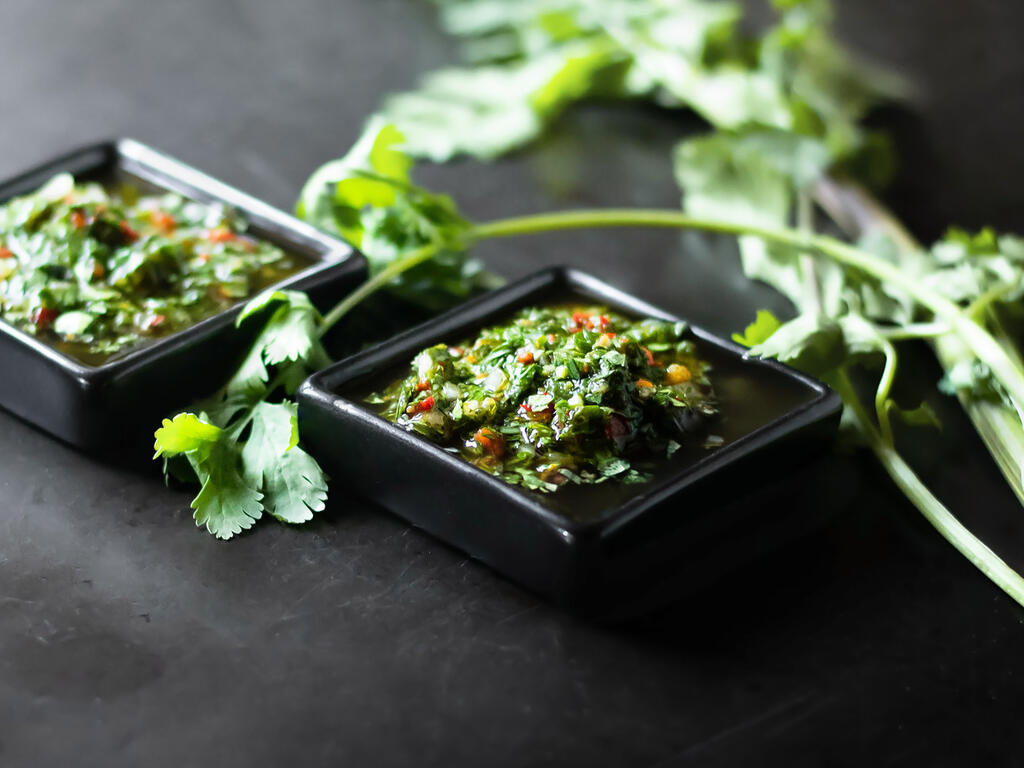
RECIPE UPDATED 8/20/2023
This chimichurri sauce is adapted from the Baco and Gjelina cookbooks. What is chimichurri? It's a heap of fresh herbs combined with olive oil, a little heat, acid, and salt. Like most simple dishes, the art is ensuring the proportions are balanced.
In addition to being delicious, the beauty of chimichurri is that there's no need to get too hung up on the exact herbs. Don't have oregano? No problem, add some extra basil, parsley, and cilantro. Does cilantro disagree with your taste buds? Add in oregano and then increase the basil and parsley. Having fish? Swap in some lemon juice for the red wine vinegar. Chimichurri can readily adapt to your protein and taste.
When it comes to technique, a number of recipes I've seen suggest using a food processor. There's no shame in efficiency, but making chimichurri is chopping bliss. Don't deny yourself the happiness and mental vacation. Grab your sharpest knife, turn on a podcast, and go with the chopping flow. Additional tips included below. There's likely a school of thought about how chopping vs. processing relates to flavor but I'm avoiding that research...for now.
Recipe Tips
Sharpest Knife in the Block
Rob's butcher grandfather said, "You'll never cut yourself with a sharp knife." That is the truth. The less force you use while slicing, the less likely you are to slip and catch your hand. Use the sharpest knife in your kitchen when making this recipe. A dull knife can pulverize the herbs making the chimichurri look kind of brown. Plus, chopping with a dull knife is as much fun as cutting off a finger.
Prep
Wash the herbs, gently dry them the best you can, and then lay them in a single layer on a towel or paper towels. You don't want the herbs to wilt but it helps if they're not droopy damp.
The Science of Fat
I mentioned in my Fresh Ricotta post how fat has a diluting effect on taste. Chimichurri's base is olive oil so the sauce needs to be properly seasoned with salt in order for the herbs to pop. If the sauce tastes flat, acid and salt are the ingredients you need to dial in. For richer foods like pork or beef, I bump things up a smidge further. (You may not need to do this if you have another element on the plate that's providing the acid.)
Ideas
I suspect some minced Preserved Lemon rind in lieu of the lemon juice would be very good.
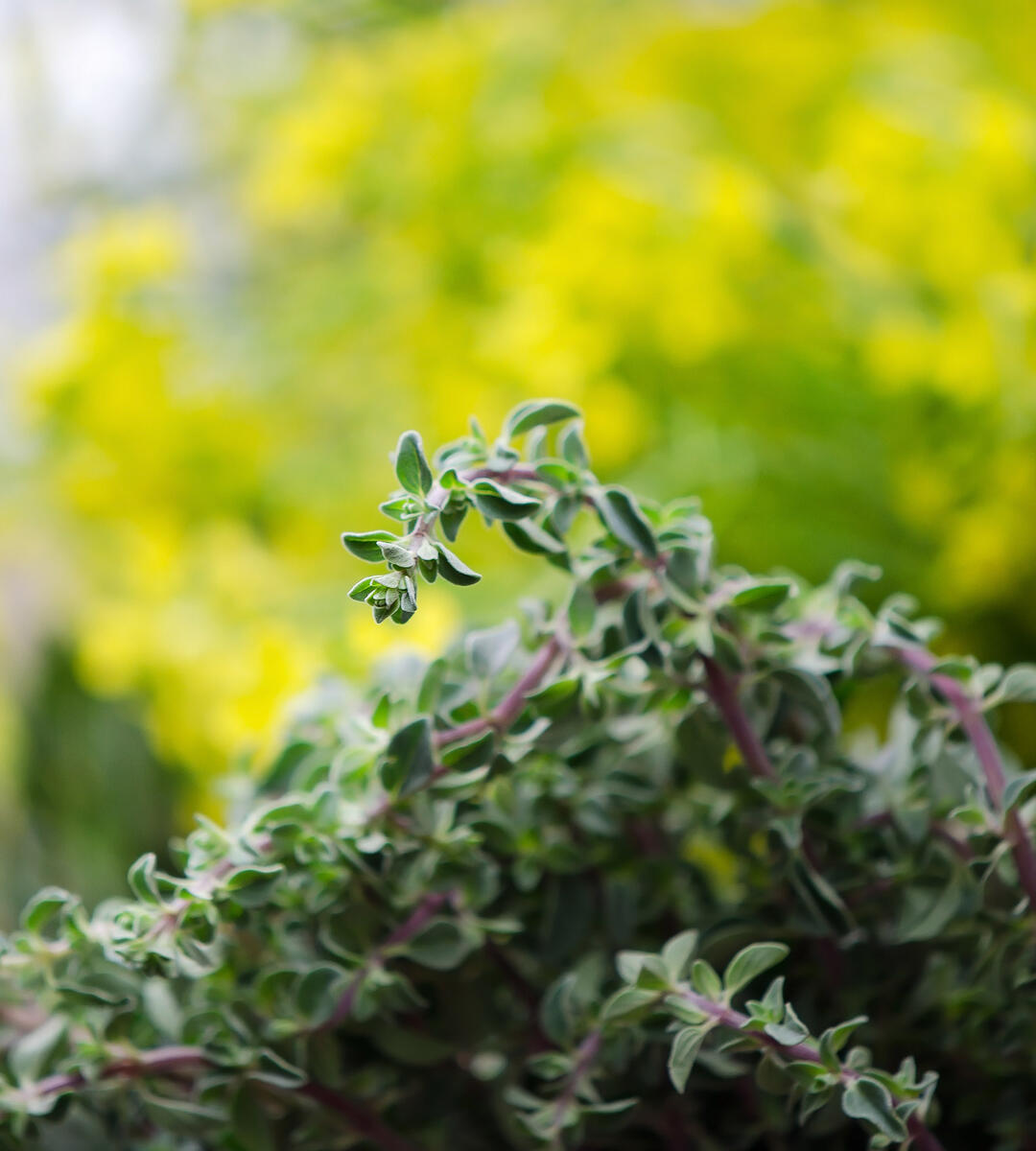
Oregano at Windrose Farm - Santa Monica Farmers Market
Farmers | Artisans
I make an effort to source my food from California artisans with a special focus on the Santa Monica Farmers Market. Below is a list of the folks who contributed to this dish.
- Polito Family Farms / Citrus
- JJ's Lone Daughter Ranch / Citrus
- Finley Farms / Shallots
- Wong Farms / Basil
- Coleman Family Farms / Cilantro
- Schaner Family Farms / Garlic, Herbs
- Trattore Farms / Olive Oil
- Gjusta Bakery / Pickled Fresno Chiles
Ingredients (Adapted from Baco and Gjelina)
UPDATE: My recent batches of chimichurri were outstanding and I credit that to increasing the vinegar and peppers (originally the recipe called for 2 to 3 teaspoons of vinegar). I still recommend starting with 1 tablespoon and incrementally working up about 3/4 teaspoon at a time. You'll notice the sauce come alive when you hit the right balance though the flavor shouldn't make you pucker.
- ½ cup extra virgin olive oil
- 1 teaspoon fresh lemon juice
- 1 tablespoon red wine vinegar plus more for adjusting
- 1 teaspoon loosely packed orange zest
- ½ teaspoon Aleppo pepper or generous pinch red pepper flakes
- 1 tablespoon minced shallot NOTE: A yellow onion works in a pinch.
- 2 to 4 small garlic cloves, minced NOTE: I adore garlic in a dynamic sauce like chimichurri so I use the full amount.
- 1 small jalapeno, seeded and minced
- 1 small Fresno chile, seeded and minced
- 30 grams minced pickled Fresno or Hot Hungarian chile (about 2 tablespoon)
- 15 grams fresh basil leaves (scant 3/4 ounce or one slightly packed cup)
- 15 grams flat-leaf parsley (scant 3/4 ounce or one slightly packed cup)
- 10 grams cilantro (about 1/4 ounce or 1 loosely packed cup)
- 3 grams oregano (about 2 tablespoons )
- Flake-style salt, to taste Note: I start with 1/4 teaspoon and adjust from there.
Instructions
- Chop all of the ingredients, leaving the herbs for the end.
- Put everything but the olive oil in a medium bowl and stir to combine.
- Add the olive oil, gently stirring as you pour.
- Taste and adjust the salt and acid so that they are balanced. This is where a bit more red wine vinegar will come into play.
- Transfer to a small airtight container and make sure all of the herbs are nudged beneath the oil.
- Leave at room temperature for about 30 minutes and then refrigerate for a few hours or overnight so that the flavors can marry. The sauce will taste slightly cilantro forward at first but everything melds together beautifully with time.
Mortar & Pestle Option
I haven't tried this method but have seen a few recipes that mention it. Creating the paste makes sense so I plan to give it a try at some point.
- Mash the minced garlic, peppers, zest, and chile flakes in a mortar & pestle to form a paste. Perhaps the shallots should be in there, too.
- Proceed with the instructions above.
